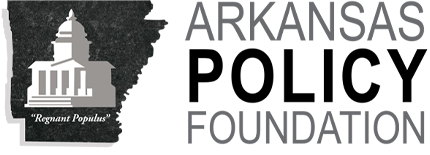“After three decades of rising education spending and dramatic personnel growth in the system, Arkansas’ academic achievement is well below national averages and lags most of the world’s industrialized countries. The current public school establishment is responsible for this performance and must be held accountable and urged to improve.” Murphy Commission, Policy Foundation project, 1998
(September 2013) Two state Department of Education reports obtained by the Policy Foundation illustrate that low educational standards continue to contribute to subpar Arkansas employment growth, as surrounding states outperform in an economy that entered its fifth year of expansion in June.1
Ninety-eight percent (98%) of Arkansas K-12 public schools met or exceeded standards in two Education Department reports that cover the 2010-11 and 2011-12 school years.2 They are required by state law.3 The 2010-11 report found 1,004 of 1,027 schools met or exceeded standards. The 2011-12 report found 1,010 of 1,029 schools in the same categories.
Only 23 schools were “in need of immediate improvement” or “on alert” in 2010-11.4 Nineteen schools were named in the two categories in 2011-12.5
Low Expectations, Low Employment Rates
“We can’t find enough skilled workers.”
Arkansas entrepreneur at 2009 Policy Foundation forum
A skilled work force (education) is an economic development factor. The reports, adequate for the Education Department will not trick labor markets. One piece of evidence is that total Arkansas payroll employment, the broadest economic indicator at the state level has increased less than the U.S. average, and five of six surrounding states in the current expansion:6
| State | June 2009 | July 2013 | Gain | |||
| Texas7 | 10,282,500 | 11,178,200 | 8.7% | |||
| Tennessee | 2,606,100 | 2,746,000 | 5.4% | |||
| United States | 130,578,000 | 136,038,000 | 4.2% | |||
| Oklahoma | 1,566,100 | 1,616,400 | 3.2% | |||
| Louisiana8 | 1,896,800 | 1,942,300 | 2.4% | |||
| Mississippi9 | 1,097,200 | 1,124,000 | 2.4% | |||
| Arkansas | 1,159,900 | 1,185,900 | 2.2% | |||
| Missouri | 2,680,700 | 2,705,300 | 0.9% |
Arkansas private employment growth also trailed the U.S. in the previous expansion,10 expanding 4.6% versus 5.5% for the U.S.11
Arkansas’ unemployment rate is also higher than surrounding states12 and five states in the 12-state Southeast region:
| Oklahoma | 5.3% | |
| Virginia | 5.7% | |
| West Virginia | 6.2% | |
| Alabama | 6.3% | |
| Texas | 6.5% | |
| Louisiana | 7.0% | |
| Florida | 7.1% | |
| Missouri | 7.1% | |
| Arkansas | 7.4% |
High Standards, High Growth
High standards are necessary for high growth rates. Employment and income growth cannot be achieved without high standards. High expectations, on their own, are no guarantee of economic growth. Arkansas officials, for more than a decade have expected to attracted an automotive super-project employing high-skilled labor. Every surrounding state except Mississippi had a project when the effort started in 2001. Mississippi achieved a project in 2003 when Nissan built a plant at Canton.13 Mississippi achieved a second plant in 2007 at Blue Springs.14 Yet Arkansas does not have a plant, with thousands of jobs and paychecks.
Arkansas education also needs high standards, though education reports that fail to use standard distributions15 or identify schools with high college remediation rates are poor examples. The failure of state education officials to set high standards has not fooled entrepreneurs who make economic decisions in labor markets. A recurring theme, expressed privately by entrepreneurs is that a shortage of skilled labor exists in Arkansas. Long-term employment and income16 metrics reported by federal economic bureaus illustrate that existing policies are not working.
Conclusion
Two state Department of Education reports found 98 percent of Arkansas public schools met or exceeded standards in the 2010-11 and 2011-12 school years. The reports, like an earlier finding (2009-10) will not trick entrepreneurs operating in Arkansas labor markets. Payroll employment is the broadest indicator at the state level. Arkansas employment growth trails U.S. averages and surrounding states for various reasons including a shortage of skilled labor. High standards should replace existing policies.
–Greg Kaza
1 Business Cycle Dating Committee, National Bureau of Economic Research (NBER). The panel found the national economy entered an expansion 51 months ago in June 2009. http://www.nber.org/cycles/cyclesmain.html
2 An earlier report for the 2009-10 school year found 97 percent of schools met or exceeded standards.
3 PA 35 of the 2nd extraordinary session of 2003
4 Schools in need of immediate improvement (Category 1) were the Arkansas School for the Deaf Elementary and High schools; Alternative Agencies, Felder Alternative Academy, and W.D. Hamilton (Little Rock SD); Springdale Alternative; and Belle Point Alternative (Fort Smith). Schools on Alert (Category 2) were Blytheville Charter; Summit (Hot Springs); Badger Academy (Beebe); Dreamland Academy; Accelerated Learning (Little Rock); Covenant Keepers High; Dollarway High; Cabot Learning Academy; Arkansas School for the Blind High; Augusta High; J.A. Fair, and McClellan High (LRSD); Fordyce High; Forrest City Junior High; OCABS Charter (Osceola); and Rose City Middle (North Little Rock).
5 Category 1 schools were the Garland Learning Center (Hope); Alternative, Accelerated, Felder and W.D. Hamilton (LRSD); SIATECH High; Arkansas School for the Deaf Elementary and High; and Springdale Alternative. Category 2 schools were Summit (Hot Springs); Saratoga High (Mineral Springs); Dollarway High; Cabot Learning Academy; Blytheville Charter; Central High (Helena); McClellan (LRSD); Dreamland; Covenant Keepers; and Belle Point.
6 U.S. Bureau of Labor Statistics, National Employment, Current Employment Statistics; and State and Local Employment
7 Texas and Tennessee do not tax capital. Economic development factors, in addition to a skilled work force include tax rates; infrastructure (transportation); a non-arbitrary regulatory climate; property rights, the rule of law and freedom of contract, according to Foundation research memos provided to legislative committees. See “States of Employment Growth” (April 2013).
8 Six Southeast states advanced private school choice in 2013. Louisiana policymakers passed a private choice option in June.
9 Mississippi policymakers created a private choice option this year for students with disabilities.
10 The NBER determined the previous expansion occurred between November 2001 and December 2007.
11 Arkansas private employment: 952,000 (November 2001), 995,300 (December 2007). U.S.: 109,669,000 (November 2001), 115,666,000 (December 2007). Arkansas private employment also trails the U.S. in the current expansion.
12 BLS, Local Area Unemployment Statistics (July 2013). Mississippi and Tennessee have greater payroll employment growth but higher unemployment rates (8.5%). South Carolina (8.1%), Kentucky (8.5%), Georgia (8.8%), and North Carolina (8.9%) are other southeast states with higher unemployment rates.
13 http://www.nissan-canton.com/
14 http://www.toyota.com/about/our_business/engineering_and_manufacturing/tmmms/index.html
15 The reports obtained by the Policy Foundation do not use standard distributions. The 2010-11 report listed only eight schools in need of immediate improvement (Category 1) while naming 320 schools of excellence (Category 5). PA 35 of 2003 created a number, not letter-based system that established the following category levels: “Level 5”, schools of excellence; “Level 4”, schools exceeding standards; “Level 3”, schools meeting standards; “Level 2”, schools on alert; or “Level 1”, schools in need of immediate improvement. PA 696 of 2013 clarifies the reports by replacing the existing system with letter grades (A, B, C, D, F), a 1998 Murphy Commission recommendation.
16 Arkansas per capita personal income of $34,723 was 81 percent of the U.S. in 2012. U.S. Bureau of Economic Analysis









